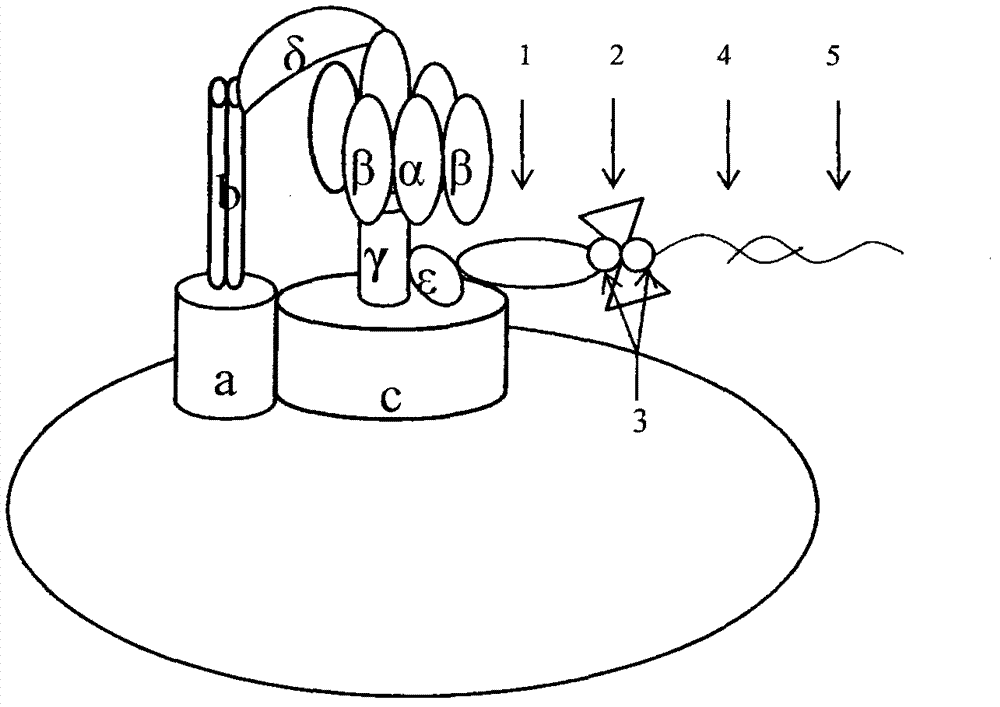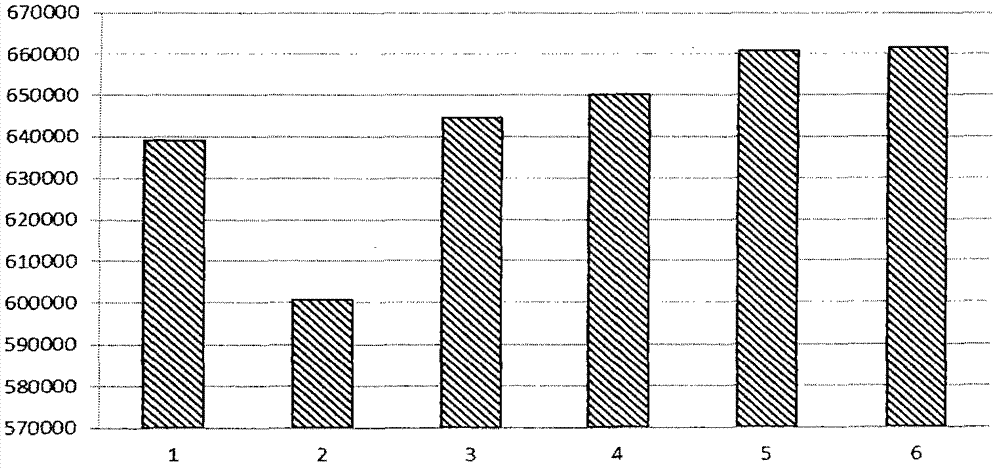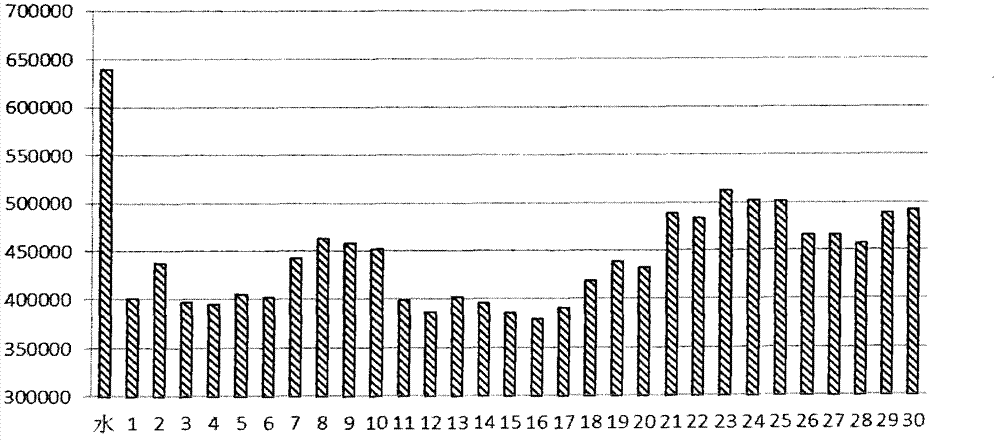F0F1-ATPase rotary molecular motor sensor kit for detecting Vibrio cholera
A F0F1-ATP, kit technology, applied in microorganism-based methods, microbial determination/inspection, resistance to vector-borne diseases, etc., can solve time-consuming and labor-intensive, increase laboratory workload, affect the quality of goods and shelf life Lifetime and other issues, to achieve high-throughput detection, high sensitivity and specificity
- Summary
- Abstract
- Description
- Claims
- Application Information
AI Technical Summary
Problems solved by technology
Method used
Image
Examples
Embodiment Construction
[0007] The specific nucleic acid probe 5'-caccaagaaggtgactttattgtg was designed according to the Vibrio cholerae ompW gene, wherein the 5' of the probe was labeled with biotin. The probe is connected to the molecular motor through the biotin antibody, and the DNA of the sample to be tested can be detected by using the molecular motor sensor. When the sample is Vibrio cholerae DNA, the fluorescence value of the detection system will change significantly. Through this Once it changes, the sample can be judged as positive. For this reason, we designed a kit that can detect Vibrio cholerae in food conveniently and quickly.
[0008] Kit composition:
[0009] Numbering
[0010] The operation steps are as follows:
[0011] 1. Take a 1.5ml EP tube and add 10μl of the sample to be tested.
[0012] 2. Put the above EP tube into boiling water for 3 minutes, then immediately transfer to ice to cool down completely.
[0013] 3. Take 2μl chromompW and dilute to a certain mult...
PUM
 Login to View More
Login to View More Abstract
Description
Claims
Application Information
 Login to View More
Login to View More - R&D
- Intellectual Property
- Life Sciences
- Materials
- Tech Scout
- Unparalleled Data Quality
- Higher Quality Content
- 60% Fewer Hallucinations
Browse by: Latest US Patents, China's latest patents, Technical Efficacy Thesaurus, Application Domain, Technology Topic, Popular Technical Reports.
© 2025 PatSnap. All rights reserved.Legal|Privacy policy|Modern Slavery Act Transparency Statement|Sitemap|About US| Contact US: help@patsnap.com



